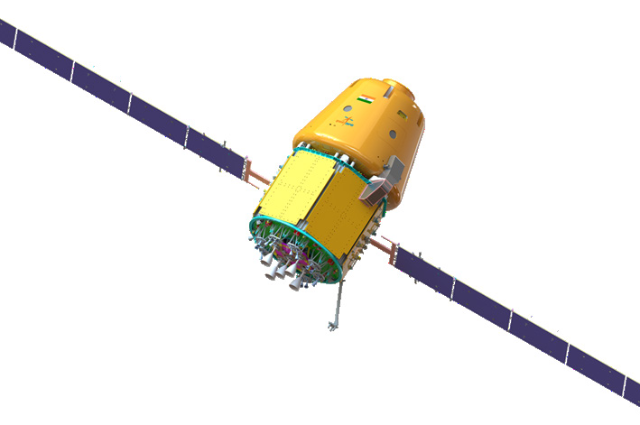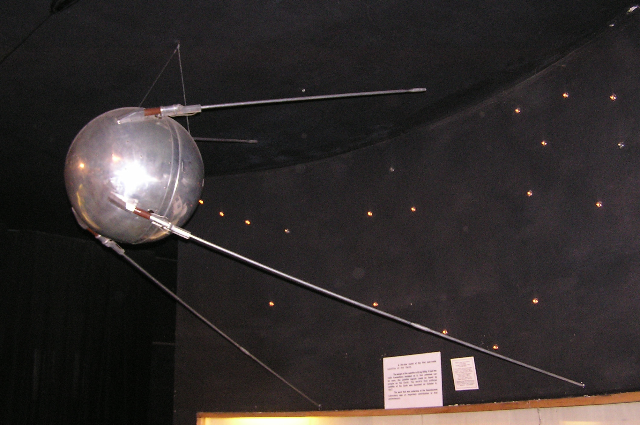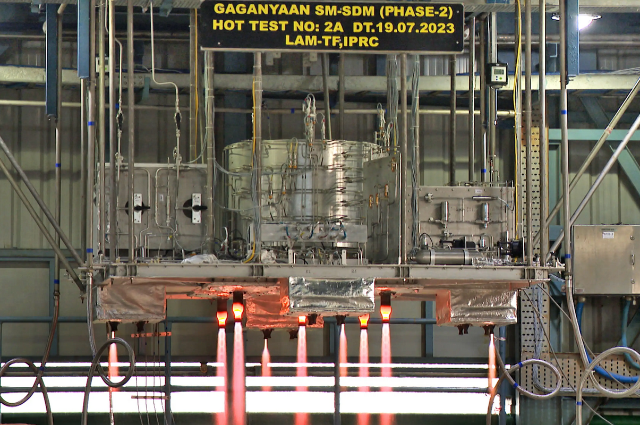The Gaganyaan project envisions the demonstration of human spaceflight capability by launching acrew of 3 members to an orbit of 400 km for 3 days and bring them back safely to earth, by landing near the coast of Sri Harikota.
The history of manned space flight is a chronicle of human ambition, technological innovation, and the relentless pursuit of knowledge. This journey, which began in the throes of the Cold War, has evolved into a multinational endeavor that continuously pushes the boundaries of what humanity can achieve.
The origins of manned space flight are deeply rooted in the geopolitical tensions of the Cold War. The Space Race between the United States and the Soviet Union was a manifestation of the ideological struggle between capitalism and communism. This rivalry spurred both nations to achieve unprecedented technological milestones. The Space Age officially began on October 4, 1957, when the Soviet Union launched Sputnik 1, the first artificial satellite, into orbit. This event sent shockwaves around the world, demonstrating Soviet technological prowess and igniting the Space Race. The success of Sputnik prompted the United States to accelerate its own space program, leading to the establishment of NASA (National Aeronautics and Space Administration) in 1958.
On April 12, 1961, Soviet cosmonaut Yuri Gagarin became the first human to travel into space aboard Vostok 1. Gagarin's 108-minute orbital flight was a monumental achievement, marking humanity's first venture beyond Earth's atmosphere. In response to the Soviet achievements, the United States launched Project Mercury, aiming to send an American astronaut into orbit. On May 5, 1961, Alan Shepard became the first American in space with a 15-minute suborbital flight aboard Freedom 7. Subsequently, John Glenn became the first American to orbit the Earth on February 20, 1962, aboard Friendship 7, solidifying the United States' position in the Space Race.
NASA's Gemini program (1961-1966) was designed to develop space travel techniques to support the Apollo mission's goal of landing astronauts on the Moon. The Gemini spacecraft could carry two astronauts and featured significant advancements over the earlier Mercury spacecraft. Key objectives included long-duration flights, extravehicular activities (EVAs), and orbital rendezvous and docking maneuvers. Gemini missions achieved several milestones: Astronaut Edward White conducted the first American spacewalk during Gemini 4, demonstrating that humans could work outside a spacecraft in the vacuum of space. Gemini 5 set a new endurance record with an eight-day mission, while Gemini 6A and 7 accomplished the first orbital trysting of two manned spacecraft, a critical step for future Moon missions. Gemini 8 achieved the first docking of two spacecraft in orbit, although the mission was cut short due to a critical thruster malfunction. The Soviet Union's Voskhod program aimed to surpass American achievements by launching multi-person crews into space. The Voskhod spacecraft, an evolution of the Vostok design, could carry three cosmonauts without spacesuits. Voskhod 2 featured the first spacewalk by Alexei Leonov, who spent 12 minutes outside the spacecraft. Leonov's EVA was a critical achievement, although he faced significant challenges, including difficulty re-entering the spacecraft due to suit inflation.
The Apollo program, aimed at landing humans on the Moon and bringing them safely back to Earth, faced a significant setback with the Apollo 1 tragedy. On January 27, 1967, a cabin fire during a pre-launch test claimed the lives of astronauts Gus Grissom, Ed White, and Roger B. Chaffee. This tragedy led to major design and safety improvements in the Apollo spacecraft. Following the Apollo 1 tragedy, NASA launched several missions to test the Command and Service Module (CSM) and the Lunar Module (LM) in Earth and lunar orbit. Apollo 7, the first manned Apollo mission, tested the CSM in low Earth orbit. Apollo 10, a "dress rehearsal" for the lunar landing, tested the LM in lunar orbit without landing. On July 20, 1969, Apollo 11 achieved the historic first manned Moon landing. Astronauts Neil Armstrong and Buzz Aldrin descended to the lunar surface aboard the Lunar Module "Eagle," while Michael Collins orbited above in the Command Module "Columbia." Neil Armstrong's famous words, "That's one small step for man, one giant leap for mankind," marked humanity's first steps on another celestial body. The astronauts conducted scientific experiments, including the deployment of the Passive Seismic Experiment and the Laser Ranging Retroreflector. Armstrong and Aldrin collected 47.5 pounds of lunar rock and soil samples for analysis on Earth.
Subsequent Apollo missions continued to explore the Moon, conducting more complex scientific investigations and increasing the duration of lunar surface activities. Apollo 12 conducted a precise landing near the Surveyor 3 probe, demonstrating pinpoint landing capabilities. Apollo 13, known for its dramatic "successful failure," experienced a critical in-flight malfunction but safely returned its crew to Earth. Apollo 14 conducted extensive geological surveys and deployed scientific instruments, including the ALSEP (Apollo Lunar Surface Experiments Package). Apollo 15 featured the first use of the Lunar Roving Vehicle (LRV), greatly expanding the range of surface exploration. Apollo 16 explored the Descartes Highlands, conducting detailed geological investigations. Apollo 17, the final manned Moon landing, conducted extensive scientific research and brought back significant lunar samples.
Skylab was the United States' first space station, launched in 1973. It served as a laboratory for scientific research and demonstrated long-duration human spaceflight capabilities. Three crewed missions (Skylab 2, 3, and 4) conducted scientific experiments in microgravity, solar observations, and medical studies. Skylab crews set records for the longest time spent in space. In 1975, the Apollo-Soyuz Test Project marked a symbolic end to the Space Race, as American and Soviet spacecrafts docked in orbit, and their crews conducted joint scientific experiments.
The Space Shuttle program, initiated by NASA, aimed to develop a reusable spacecraft for a wide range of missions, including satellite deployment, scientific research, and construction of the International Space Station (ISS). The Shuttle consisted of the Orbiter, Solid Rocket Boosters (SRBs), and the External Tank (ET). It could carry up to seven astronauts and a variety of payloads. The first Shuttle flight, STS-1, launched on April 12, 1981, with Columbia, marking the beginning of operational Shuttle flights. The Space Shuttle program saw significant milestones, including the deployment of the Hubble Space Telescope in 1990, which revolutionized our understanding of the universe through its detailed observations. However, the program also faced tragic setbacks. The Challenger explosion during the launch of STS-51-L in 1986 claimed the lives of seven astronauts and led to significant safety overhauls. The Columbia disaster in 2003, during re-entry on STS-107, underscored the inherent risks of spaceflight and prompted further improvements in Shuttle safety.
The International Space Station (ISS) represents the pinnacle of international collaboration in space exploration, with contributions from NASA, Roscosmos, ESA, JAXA, and CSA. The ISS serves as a microgravity laboratory for scientific research, technology development, and international cooperation. The ISS was assembled in orbit over multiple Shuttle and Soyuz missions, starting with the launch of the Zarya module in 1998. The ISS hosts a wide range of experiments in fields such as biology, physics, astronomy, and Earth sciences.
The Gaganyaan mission, India's ambitious venture into human spaceflight, is driven by a multitude of objectives aimed at advancing scientific knowledge, technological capabilities, and international collaboration. The primary objective of Gaganyaan is to demonstrate India's capability to launch astronauts into space, orbit Earth, and safely return them to the surface, marking India's entry into the elite club of nations capable of human spaceflight.
The mission also serves as a platform for the development and validation of cutting-edge technologies across various disciplines, including spacecraft design, life support systems, crew safety mechanisms, and re-entry technologies. These advancements have far-reaching implications for both space exploration and terrestrial applications. Additionally, Gaganyaan enables scientific experimentation and research in microgravity environments, offering valuable insights into fundamental scientific phenomena such as fluid dynamics, materials science, biology, and human physiology. These experiments contribute to the advancement of knowledge and have potential applications in fields such as medicine, agriculture, and manufacturing.
The LVM3 launch vehicle has been chosen to carry the orbital module to the Low-Earth Orbit, situated at 400km above Earth’s surface. This is because LVM3 has undergone an exhaustive human-rating process, characterized by rigorous technical evaluations to guarantee crew safety and mission success. The LVM3's structure is meticulously crafted using advanced materials such as aluminum-lithium alloys and carbon fiber composites. Structural integrity is ensured through Finite Element Analysis (FEA) simulations, which assess the vehicle's response to aerodynamic loads, structural stresses, and dynamic vibrations during ascent and re-entry. Redundancy is embedded throughout the LVM3's subsystems to mitigate single-point failures, exemplified by critical systems such as propulsion and guidance featuring redundant components and backup systems.
The LVM3 is equipped with a comprehensive launch abort system capable of rapidly separating the crew module from the launch vehicle under various emergency scenarios. The system's redundancy guarantees reliable operation and swift crew evacuation, even during critical phases such as launch pad aborts or ascent aborts. The LVM3's avionics suite integrates state-of-the-art sensors, processors, and communication systems to facilitate precise navigation, guidance, and control throughout the mission profile. Redundant avionics architectures and fault detection algorithms ensure real-time data processing, fault mitigation, and autonomous decision-making capabilities, enhancing mission autonomy.
The Orbital Module (OM) of the Gaganyaan spacecraft is the integration a multitude of advanced technologies and convoluted design features to create a safe, habitable environment for Vyomanauts (Indian astronauts) during their mission in space. At the core of the OM is the Crew Module (CM), a highly specialized structure designed to ensure the operational efficiency of the crew throughout their mission.
The CM is engineered with a dual-walled structure, consisting of an inner pressurized metallic shell and an outer Thermal Protection System (TPS), which provides a shield against the extreme temperatures and radiation encountered in space. This innovative design not only protects the astronauts but also maintains a stable, Earth-like environment within the CM. Life support systems are integrated into the CM, regulating atmospheric composition, temperature, and humidity to ensure the crew's well-being during the mission. Critical to the CM's functionality are its advanced avionics and instrumentation systems, which provide the crew with real-time data, control interfaces, and communication capabilities. These systems enable the astronauts to monitor spacecraft systems, execute mission tasks, and communicate with ground control, ensuring the mission's success and the crew's safety throughout their journey.
The Service Module (SM) complements the CM by housing vital systems and subsystems necessary for the spacecraft's operation. The SM includes power generation systems, propulsion systems, thermal regulation systems, and communication systems, all of which are integral to the spacecraft's functionality and autonomy in orbit. The propulsion systems within the SM consist of high-performance thrusters and propellant tanks, enabling precise maneuvering, orbit adjustments, and attitude control. This ensures the spacecraft's optimal positioning and trajectory management throughout the mission. The thermal regulation systems utilize advanced radiators and heat exchangers to maintain internal temperatures within specified limits, preventing equipment overheating and ensuring operational reliability. Power generation systems, including solar panels and energy storage units, provide electrical power to all onboard systems, sustaining mission operations and supporting crew activities. Avionics and communication systems facilitate data processing, telemetry transmission, and command reception, enabling seamless communication with ground control and coordination of mission activities.
Gaganyaan also houses the Crew Escape System (CES), a critical safety feature engineered to swiftly and effectively propel the crew module away from the launch vehicle in the event of an emergency, safeguarding the lives of the astronauts on board. Designed with meticulous attention to detail and incorporating advanced propulsion technology, the CES ensures the crew's safety during all phases of the mission, from launch to orbital insertion.
At the heart of the CES are quick-acting, high burn rate solid motors integrated into the crew module structure. These motors are strategically positioned to provide rapid and powerful thrust, enabling the crew module to swiftly separate from the launch vehicle within milliseconds of detecting an anomaly or emergency situation. This rapid separation ensures that the crew module and its occupants are swiftly propelled to a safe distance from the launch vehicle, mitigating the risks associated with potential catastrophic events such as malfunctioning propulsion systems, structural failures, or other unforeseen anomalies. The CES is designed to operate autonomously, with redundant fail-safe mechanisms and backup systems ensuring reliability and performance under all conditions. Advanced sensors and onboard diagnostics continuously monitor the status of the launch vehicle and crew module, automatically activating the CES in the event of an emergency. Additionally, manual override controls are incorporated to enable crew intervention in case of system malfunction or unexpected contingencies.
The integration of the CES within the overall spacecraft architecture is governed by stringent engineering standards and safety protocols. Structural interfaces between the crew module and launch vehicle are carefully designed to withstand the forces exerted during CES activation, ensuring structural integrity and load-bearing capacity. Redundant mechanical connections provide additional assurance against separation failures or structural compromises, enhancing the system's reliability and effectiveness. Extensive testing and validation procedures are conducted to verify the CES's performance under simulated emergency scenarios and operational conditions. Ground-based tests, including static firing tests and dynamic simulations, assess the system's functionality, thrust characteristics, and response times.
The Gaganyaan mission involves a series of technological tests and validations to ensure the safety and reliability of the spacecraft and its systems. The Space Capsule Recovery Experiment (SRE) is a pivotal test conducted to validate and refine technologies essential for the safe recovery of spacecraft after re-entry into Earth's atmosphere. The SRE entails launching a spacecraft into orbit, subjecting it to the extreme conditions of space, and then executing a controlled re-entry to test the efficacy of recovery mechanisms. It contains two payloads: an Isothermal Heating Furnace (IHF) and a Bio-mimetic capsule. Central to the SRE is the spacecraft's thermal protection system (TPS), designed to withstand the intense heat generated during re-entry. The TPS comprises ablative materials and insulating layers that dissipate heat and prevent damage to the spacecraft's structure and internal systems. Additionally, the spacecraft is equipped with a robust aeroshell and heat shield, further enhancing its ability to endure the harsh re-entry environment. During re-entry, the spacecraft utilizes a series of parachutes or airbags to decelerate and ensure a soft landing. These recovery systems undergo rigorous testing to validate their performance under various conditions, including different re-entry trajectories and speeds.
The Crew Module Atmospheric Re-entry Experiment (CARE) is an extension of the SRE, specifically focusing on crewed spacecraft. CARE tests the re-entry and recovery systems of the crew module, including parachute deployment, landing accuracy, and crew safety measures. The Environmental Control and Life Support System (ECLSS) is a critical component of crewed spacecraft, responsible for maintaining a habitable environment for astronauts. ECLSS regulates the spacecraft's atmosphere, controlling oxygen levels, carbon dioxide levels, humidity, and temperature. Advanced scrubbing technologies and closed-loop life support systems ensure continuous air revitalization, water recycling, and waste management to sustain crew health and performance throughout the mission duration.
In conclusion, the Gaganyaan project marks a significant milestone in India's journey towards becoming a major player in human space exploration. By leveraging advanced technologies and building upon the rich history of global space endeavors, Gaganyaan aims not only to demonstrate India's capability to conduct human spaceflight but also to contribute valuable scientific knowledge and foster international collaboration.



